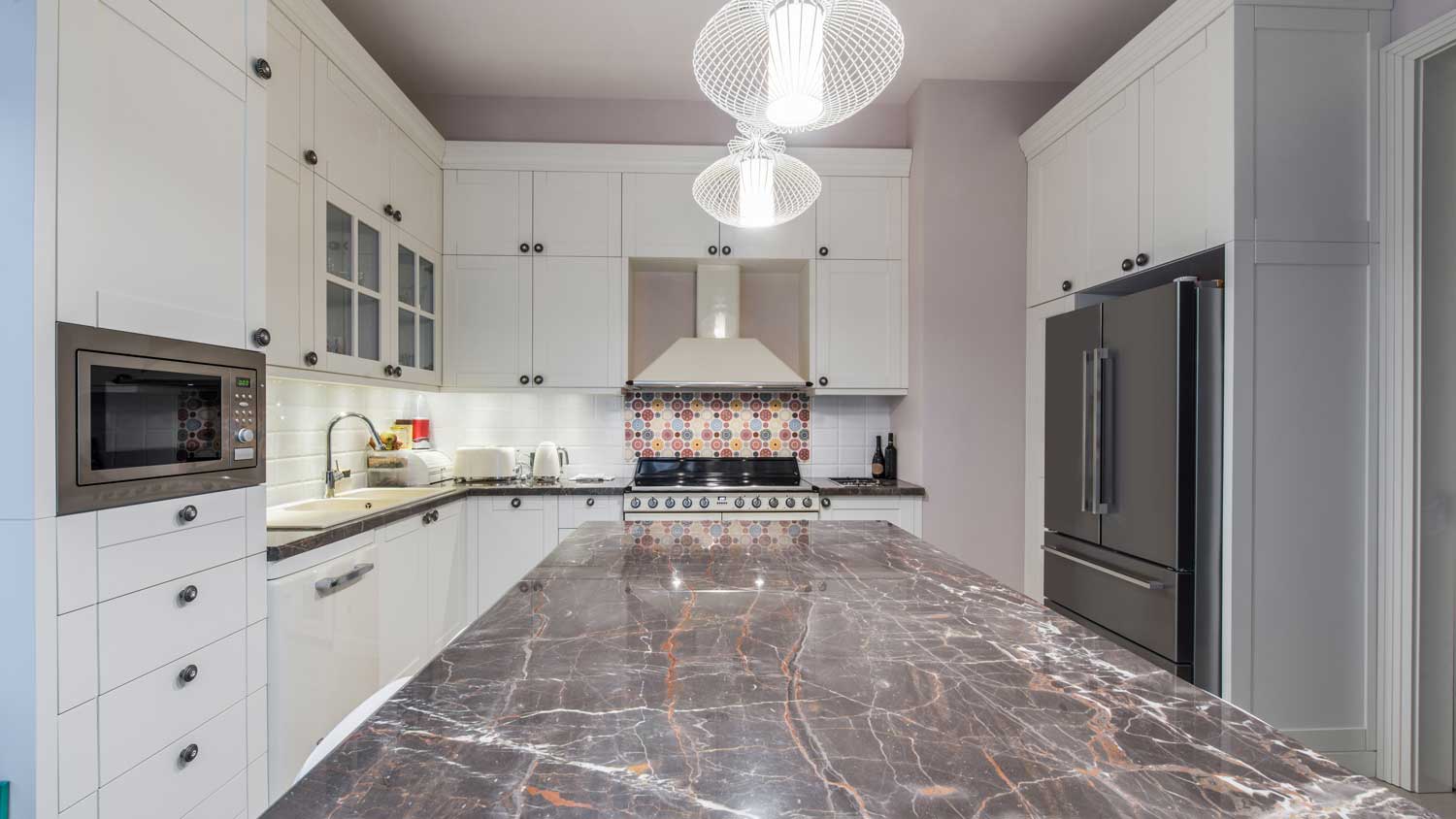How to Secure Any Type of Kitchen Countertop to Your Cabinets: 6 Tips
An unanchored countertop is a disaster just waiting to happen
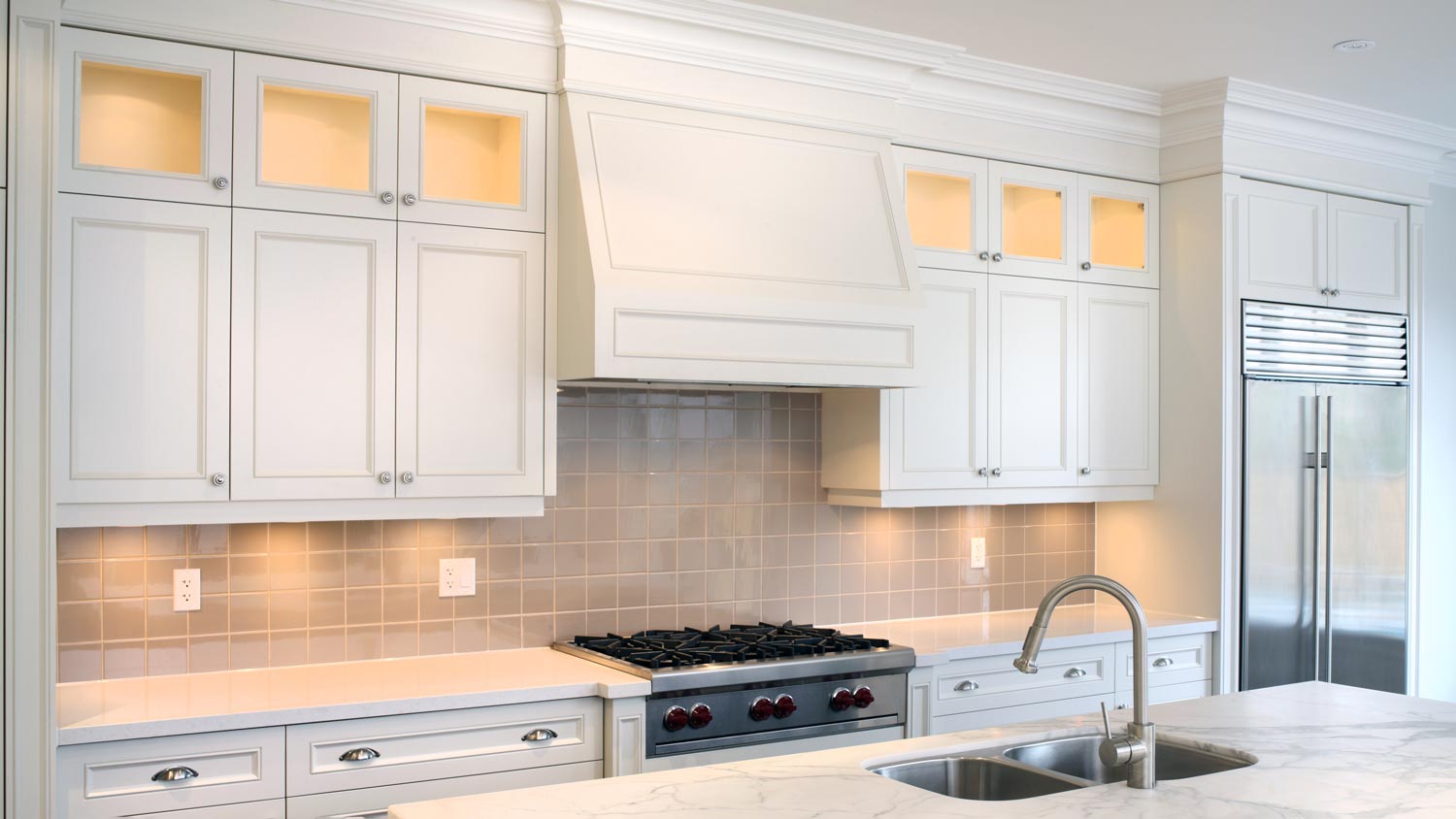

For many homeowners, the kitchen is a hard-working space for cooking and spending time with family and friends. So, of course, you want to ensure the security of your countertop installation. No matter its material, from laminate to stone, doing the job right prevents sagging, shifting, and warping over time—not to mention personal injury. Whether the process involves brackets, adhesives, or screws, here are some tips for how to secure a countertop to cabinets.
1. Determine How Much Weight Your Cabinets Can Handle
When installing a new countertop, you must first determine the weight your base cabinets can support. Most base cabinets can support 100 to 500 pounds, but older cabinets built for laminate counters may struggle with heavier materials like stones or concrete.
If you're replacing laminate counters in an older home, ensure the existing structure can handle the extra weight. Examine the cabinets for structural stability and wear and tear. When in doubt, consult a local countertop contractor for expert guidance. Pros like these have the experience to shore up existing cabinetry and can also recommend and install the best counter material for your home and lifestyle.
You can expect countertop installation costs to range from $1,880 to $4,475. The cost of labor in your area, the size of your kitchen, and the countertop material you select will impact your grand total.
2. Measure Your Base Cabinets
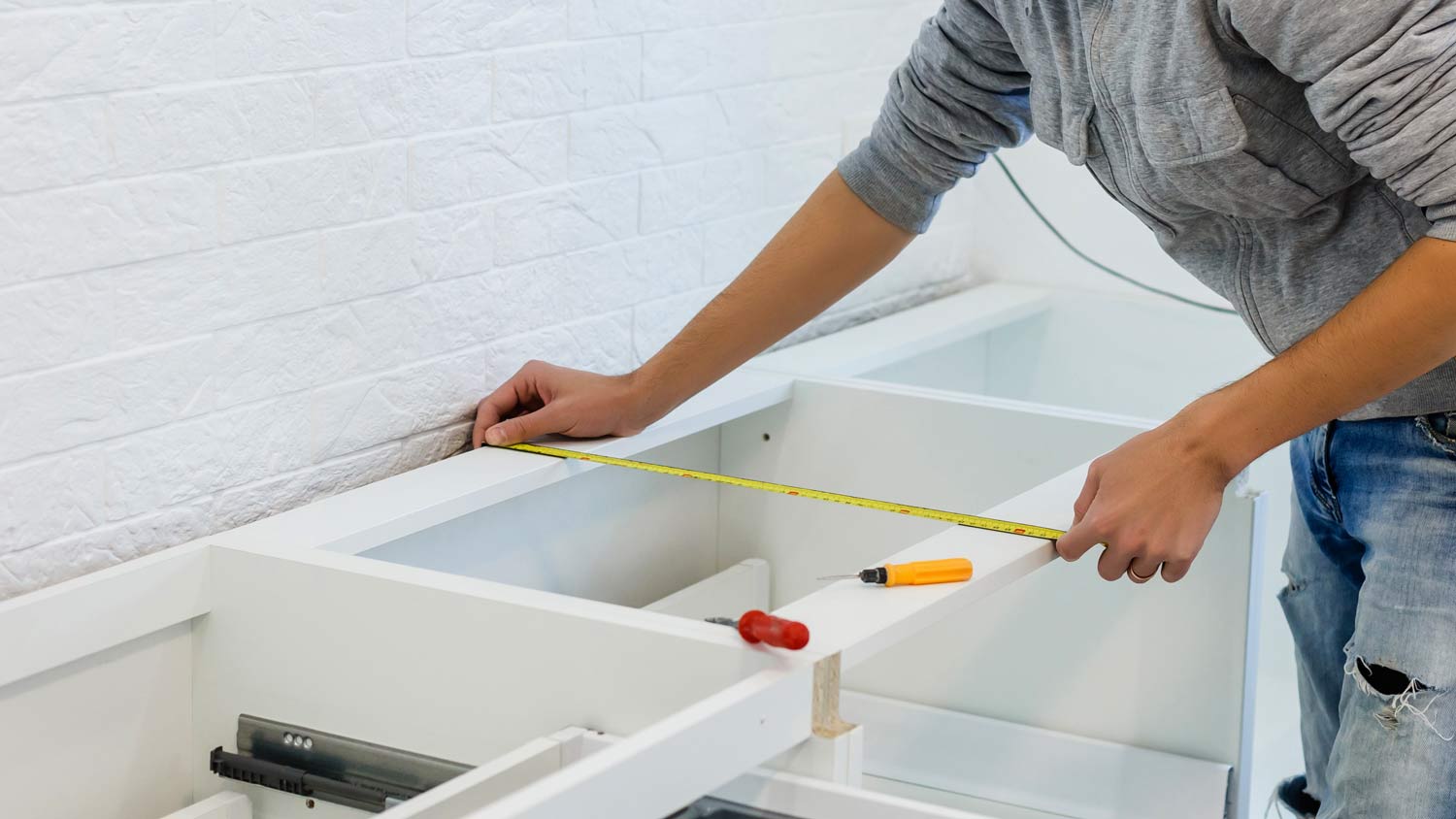
Nailing down measurements is essential for most home improvement projects, especially for securing new countertops to base cabinets. You want to ensure you account for your counters' overhang, which should be 1 to 1.5 inches for standard countertops and up to 18 inches for seating areas. Remember to factor in appliances and sinks to avoid fit issues.
3. Use the Right Fasteners
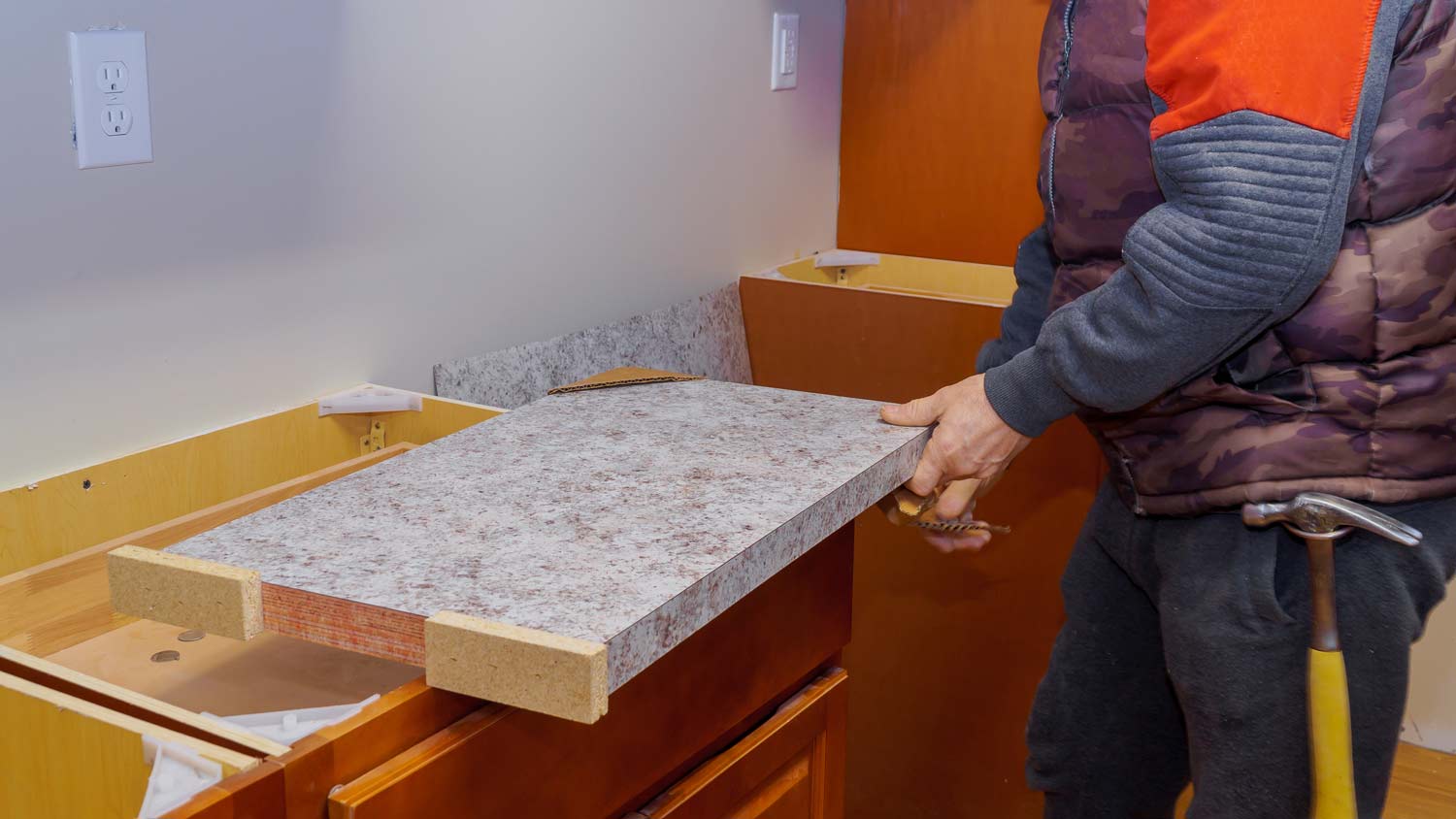
Every countertop material is different, requiring specific types of fasteners to secure them in place. Material composition, weight, and installation requirements inform what to use. Here's your cheat list:
Wood Countertops
Counters made of butcher block or other types of wood will expand and contract based on different weather conditions. To keep them securely in place, use screws that are roughly half the thickness of the counter when attaching to cabinets.
Laminate Countertops
Put simply, laminate is a synthetic veneer material that adheres to wood or a wood-based substrate like MDF. Since wood and MDF contract and expand during hot and cold weather, screws are the best option to secure this material. Add a ⅛-inch gap between the back edge of the countertop and the wall to allow for expansion, especially if you’re installing against a backsplash.
Stone Countertops
Granite, marble, quartz, and other stone countertop types are undeniably heavy. However, despite their density, they can be easily damaged by screws, which may cause cracks and chips. Instead, professionals rely on construction adhesives and metal brackets to secure them safely.
Concrete Countertops
The key takeaway: Concrete countertops are much heavier than stone. To keep them secure, professionals use a combination of fasteners—construction adhesives, screws, brackets, and shims—anchoring them to sturdy cabinetry designed to support their weight.
Glass Countertops
While glass countertops offer sturdiness, installation requires a slightly delicate touch. Many contractors will incorporate rubber clips, construction adhesives, and metal brackets to avoid accidentally cracking or breaking the material.
4. Reinforce With Silicone Caulk
Once you secure your countertop to the cabinets, top off your project with silicone caulk or a similar sealant. This very important step will lock out moisture, preventing water damage to the cabinets. Remember to apply along the edges near walls and seams.
5. Check for Stability
After securing your countertop to the base cabinets and letting the adhesives and caulk fully cure, give your counter a little nudge. Did it move? Try tightening up any screws, installing more brackets, or applying more adhesive. If it’s still wobbly, call a pro to identify and correct the issue.
6. Consider Decorative Molding
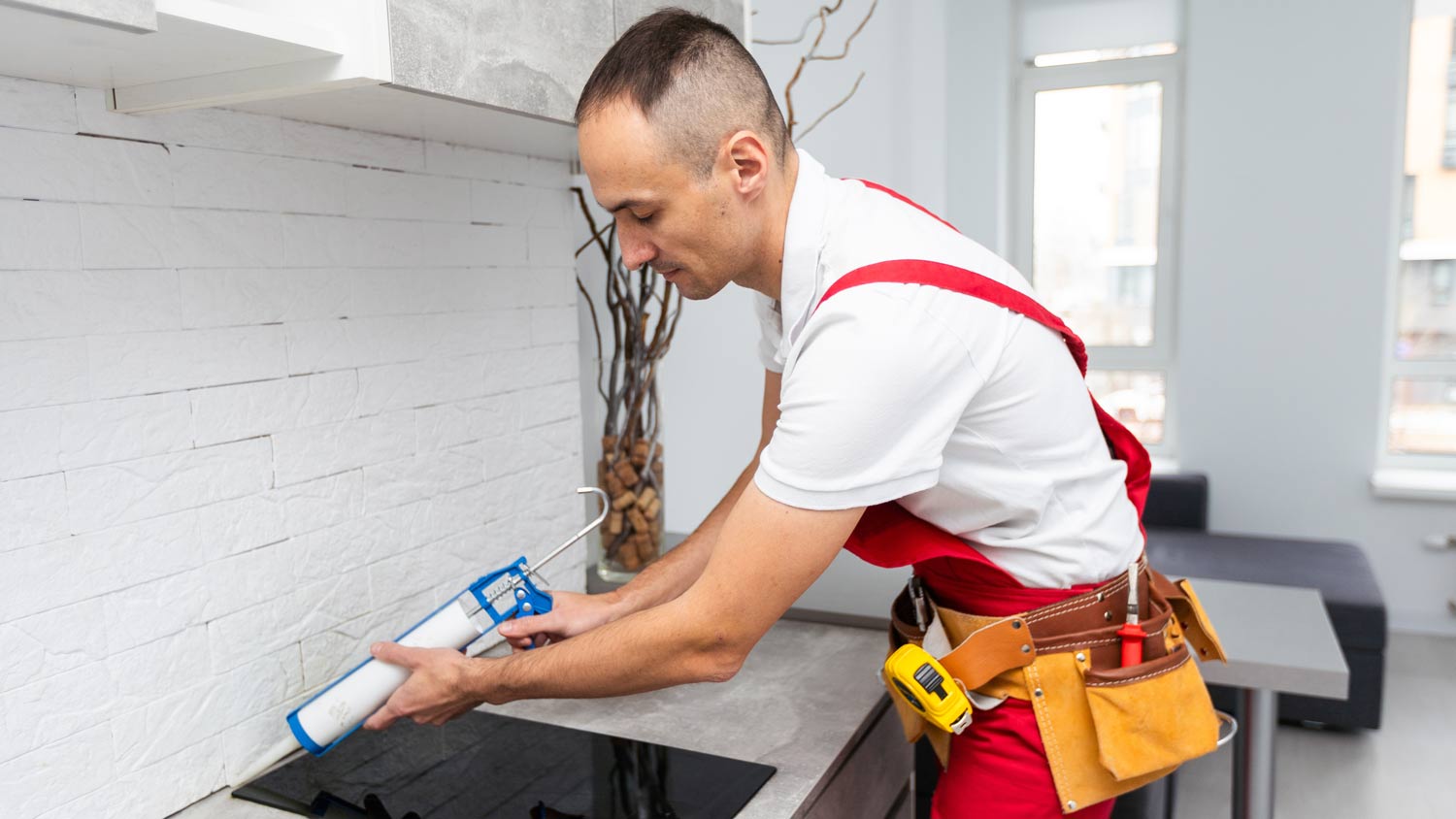
Adding a few finishing touches, like decorative molding, to your project can boost stability and create a seamless appearance, blending your cabinets and countertops. Add trim to the underside of your countertop using a molding style that matches your cabinetry. Cut the molding to fit along the edges and secure it with construction adhesive or a nail gun.
Afterward, fill gaps with caulk and sand before painting to match your cabinets. Remember, this small detail can make a considerable difference, elevating your entire kitchen and boosting your enjoyment at home. It’s also a budget-friendly decor idea you can do now until you are ready to consider the cost of a kitchen remodel.




